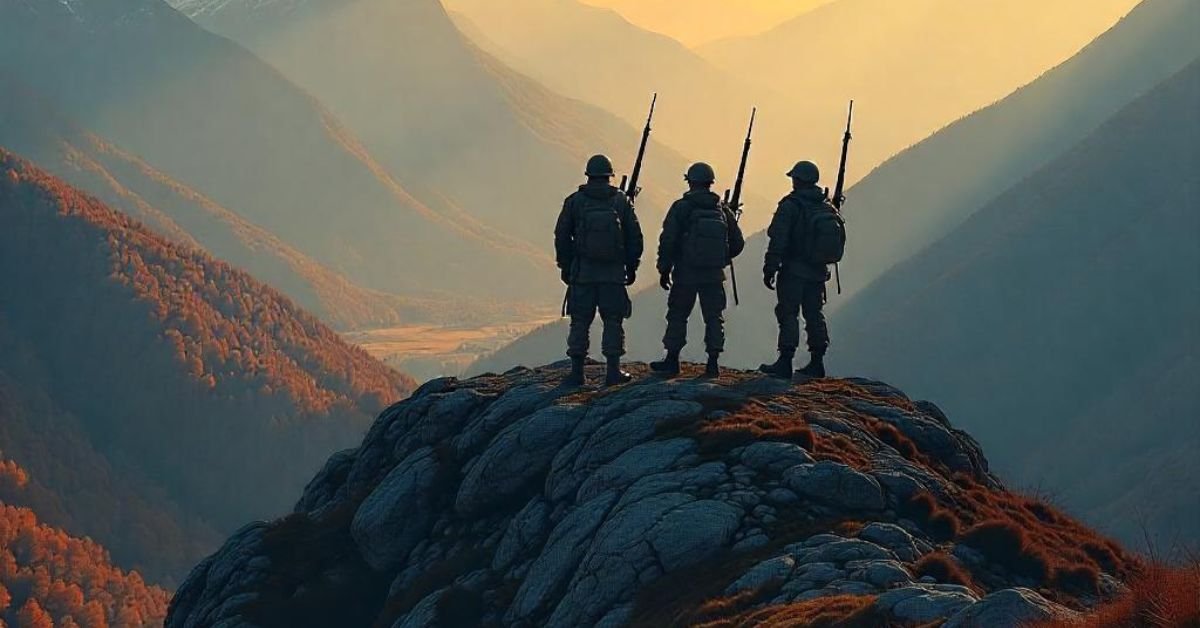BLOG
Unmasking the Risks: AI Face Swap in NSFW Content

Introduction: Unmasking the Risks of AI Face Swap in NSFW Content
Unmasking the Risks In an era where artificial intelligence has advanced far beyond simple automation, one of its most controversial applications is AI-generated face swapping in adult or NSFW content. While the technology behind face swaps—especially deepfakes—was originally developed for entertainment and cinematic effects, its misuse in explicit media has raised alarming ethical, psychological, and legal concerns. This article explores the hidden dangers, evolving legal frameworks, and societal implications of AI face swap in NSFW content, and how it affects privacy, consent, and digital identity.
The Evolution of Face Swap Technology
AI-powered face swap tools have become incredibly sophisticated. Using machine learning models such as Generative Adversarial Networks (GANs), these tools can superimpose one person’s facial features onto another’s body in video or image format with high accuracy. Initially popularized through apps like Reface and Snapchat filters, the technology has spiraled into darker corners of the internet, especially adult websites and forums.
While the entertainment industry celebrates such tools for de-aging actors or recreating historical figures, the rise of unauthorized NSFW deepfakes has triggered global concern. Victims—many of whom are unaware their likeness is being exploited—often experience reputational damage, emotional trauma, and even social isolation.
How AI Face Swap in NSFW Content Works
The process begins with collecting multiple facial images of a target person, often celebrities, influencers, or even private individuals whose photos are available on social media. Deep learning algorithms analyze these inputs to create a facial model, which is then rendered onto existing adult content. Unlike traditional Photoshop edits, these videos can mimic expressions, angles, and lighting, making the result terrifyingly realistic.
The misuse of these AI-generated face swaps introduces a serious concern: the lack of consent. Consent, a fundamental pillar in both digital ethics and sexual rights, becomes entirely absent in these synthetic creations.
The Legal Landscape: Is It Even Illegal?
As of now, laws surrounding AI-generated NSFW content vary significantly between countries. In the United States, some states like California and Virginia have passed legislation that criminalizes the use of deepfakes in pornographic material without consent. However, enforcement remains weak due to jurisdictional issues and the anonymity of creators.
Globally, the EU’s Digital Services Act and the UK’s Online Safety Bill are beginning to address these concerns, aiming to hold platforms accountable. Yet, legal loopholes still allow this form of digital manipulation to flourish in gray areas of the internet.
Psychological & Social Impact on Victims unmasking-the-risks
The impact of being unknowingly featured in a deepfake porn video is profound. Victims often report severe anxiety, depression, and distrust toward social platforms. For public figures, this content can derail careers or incite harassment. Even private individuals have seen their digital identities hijacked for personal revenge or blackmail—a tactic known as revenge
This erosion of trust in digital media makes it harder to distinguish reality from fabrication. It also undermines the legitimacy of authentic evidence in journalism, courtrooms, and social movements.
Platforms and Responsibility: Are Tech Companies Doing Enough?
While platforms like Pornhub and Reddit have banned deepfake porn, enforcement is inconsistent. New websites emerge regularly to host this kind of material, often hosted in countries with lax digital rights enforcement. Social media giants like Twitter and Facebook have implemented policies against non-consensual nudity, but AI-driven content detection still lags behind creator innovation.
Furthermore, open-source AI models such as DeepFaceLab and FaceSwap remain publicly accessible. These tools are often misused by underground communities that share tips on how to perfect NSFW fakes, further fueling the issue.
The Consent Crisis: When Digital Faces Are No Longer Yours
Consent in digital spaces is becoming a blurred concept. This has prompted activists and digital rights organizations to push for image ownership rights, proposing that every human being should legally own the rights to their facial data.
As biometric data becomes currency—used in everything from facial recognition to advertising—the notion that someone else can exploit your likeness for adult content without your knowledge or permission is deeply disturbing.
Ethical Dilemmas and the Future of Regulation unmasking-the-risks
Philosophers and AI ethicists argue that AI face swap technology in NSFW content reflects a deeper issue with consent culture online. If AI can fabricate a video of you doing anything, what happens to the very idea of proof or reality?
We are quickly entering an age where synthetic media outpaces regulation. Without clear global standards, tech companies, creators, and governments face a slippery slope where artistic expression, freedom of speech, and digital exploitation dangerously overlap.
Countermeasures and How to Protect Yourself unmasking-the-risks
Experts recommend limiting the amount of facial data you post online. Privacy-focused browser extensions can block image scraping bots, and platforms like TikTok and Instagram now offer facial detection warnings.
Meanwhile, AI startups are developing deepfake detection tools, including blockchain verification for original content and reverse-image lookup software that alerts users if their face appears in unauthorized content.
FAQs: AI Face Swap in NSFW Content
Q1: Is AI-generated NSFW content with face swap illegal?
It depends on the jurisdiction. Some countries have passed laws criminalizing non-consensual deepfakes, especially in adult content. Others are still in legislative limbo.
Q2: How can I check if my face has been used in a deepfake?
Reverse image search, tools like Sensity.ai, and blockchain-based face scanners can help detect unauthorized usage.
Q3: Can tech companies block deepfake uploads automatically?
To some extent, yes. YouTube, Facebook, and others have implemented AI-based moderation, but it’s not foolproof.
Q4: What should I do if I find a deepfake of myself online?
Document the content, report it to the platform, and contact digital rights organizations. In some regions, legal recourse may be available.
Q5: Are there any positive uses for AI face swapping?
Yes. It’s used in filmmaking, accessibility, and education when consent is given. The problem arises when consent is removed from the equation.
Conclusion: Rethinking AI and Consent in the Digital Age
As we navigate the complexities of AI face swap in NSFW content, one thing becomes clear—technology alone isn’t to blame. The real issue lies in how we, as a society, define ethics, accountability, and digital ownership. The misuse of face swap tech in explicit media highlights urgent gaps in law, awareness, and personal digital hygiene.
Only with stronger regulations, more responsible tech innovation, and widespread education can we reclaim our digital identities and unblur the lines between real and fake, ethical and exploitative.
CLICK HERE FOR MORE BLOG POSTS
BLOG
Echoes Along the Snow Road

snow road is a seasonal, snow pavement–like corridor, usually generated over land or frozen water. It shares similarities with the more robust ice road, but relies primarily on layers of compacted snow that are groomed and hardened to create a durable surface. Ice crossings, frequently found where frozen rivers or lakes form natural bridges, are a specific form of ice road—yet snow roads most often take shape where heavy snowfall and purposeful grooming intersect.
Creation and Maintenance
Constructing a snow road begins with heavy machinery compacting fresh snowfall until it resembles a resilient pavement. Once compressed, additional layers of ice may be sprayed to smooth the surface, forming an ice cap that enhances load-bearing capacity. Seasonal road engineers periodically resurface the route, addressing shifts caused by thaws or fresh snowfall. This maintenance ensures consistent levels of compaction and surface integrity, essential for safe travel.
Vehicles and Equipment for the Snowy Way
Choosing the Right Tires
Navigating a snow road without proper snow tires is a gamble. These specialized tires, often equipped with deep grooves and sometimes studs, provide increased traction on the slick, icy surface. Their rubber compound remains pliable even in sub-freezing temperatures, gripping the compressed snow pavement with each turn and stop.
Snow Chains and Traction Aids
When snow tires alone aren’t enough, snow chains—or their modern counterpart, snow socks—are essential. These metal- or fabric-based accessories enhance traction dramatically by digging into the snow or ice. Drivers should install them before venturing onto the snow road and remove them as the route transitions to clearer conditions, ensuring proper wear and safety.
Suitable Vehicles
A wide variety of vehicles can navigate snow roads, from rugged all-wheel-drive pickups to heavily modified semis hauling timber or supplies across winter terrain. The key lies in load distribution and suspension adaptability: heavier vehicles compress the snow better, increasing the surface’s strength, but also require greater awareness of potential instability on melting or shifting ice. Whether crossing over a frozen marsh or winding through snow-laden forest, vehicle choice directly influences the journey’s safety.
Safe Driving Practices on Snow Roads
Controlling Your Speed
Winter driving calls for reduced speeds and anticipatory control. On compacted snow and ice caps, even gentle acceleration or braking can lead to slides. Maintain a steady, low speed and use low gears whenever possible—especially on inclines and descents. Since the surface of a snow road can look deceptively smooth but harbor hidden pockets of melt or thin ice, cautious driving is always the best defense.
Detecting Risk Zones
Black ice—completely transparent and nearly invisible—poses one of the greatest threats. Often found in shaded areas or where solar heat has melted the surface, it leaves behind reflections that can deceive drivers. Ice crossings over water bodies also present danger: without thick ice, pressure from vehicles can fracture the crossing suddenly. Drivers must be aware of seasonal temperature changes and follow local guidance on ice thickness.
Handling Emergencies
A slip, sag, or breakdown on a snow road requires proper response: turn on hazard lights, engage the parking brake, and place reflective triangles or flares to alert others. For stranded vehicles, carry recovery gear such as traction mats, shovels, tow straps, and portable jump starters. Communication devices making contact with emergency services or fellow travelers can prove critical during remote journeys.
Environmental and Seasonal Considerations
Limited Operational Window
Snow roads only exist when temperatures remain low enough—typically from late autumn through early spring. As winter recedes, thaw patterns weaken the compaction and ice caps, increasing the risk of vehicle-induced melt and groundwater disturbance. Local authorities often declare road closures during transitional periods to prevent damage and preserve freshwater ecosystems.
Ecological Impacts
Road salt and traction sand, commonly used on paved winter roads, are often avoided on snow roads to protect the fragile environment beneath. However, repeated passage of heavy vehicles can compress underlying flora and alter soil composition. Administrators sometimes restrict vehicle weight or frequency to mitigate disturbances to wildlife and preserve permafrost.
Ice Crossings vs Snow Roads: Clear Distinctions
Although both pathways allow winter travel, ice crossings differ from snow roads in origin. Ice crossings form naturally over frozen water, usually lakes or rivers, and rely solely on ice thickness to bear weight. In contrast, snow roads are deliberately constructed on land and require engineered compaction and maintenance. Ice crossings may undergo reinforcement—like channeled water or snow compaction—to ensure safety, yet they lack the multi-layer structure characteristic of groomed snow roads.
Real-World Examples and Applications
Remote and Industrial Use
In northern regions, where permanent roads are impractical, snow roads enable remote communities, mining operations, and oil camps to connect with main lines. The Northwest Territories in Canada and Siberian stretches in Russia rely on such routes for winter resupply missions—when frozen topography and ice crossings offer dependable seasonal access.
Tourist and Recreational Routes
Beyond industrial use, snow roads can guide recreational expeditions—snowmobiling tours, winter safaris, and remote lodge access. In these settings, well-engineered snow pavement ensures both traveler comfort and environmental protection by preventing off-road damage to delicate tundra ecosystems.
FAQs
Q1: What is a snow road?
A snow road is a temporary pathway built of compacted snow and ice, designed to support vehicles in cold environments. It differs from an ice road in that it’s actively constructed and maintained rather than simply formed by natural freezing.
Q2: How is it different from an ice road?
An ice road lies over frozen water and relies on sheer ice strength. A snow road, conversely, is built atop land, requiring layered compaction and grooming to form a solid snow pavement.
Q3: What vehicles can use a snow road?
All-wheel-drive pickups, trailers, heavy-duty semis, and even snowmobiles can navigate these routes, provided their weight and dimensions fit within guidelines, and they carry appropriate gear like snow chains or traction aids.
Q4: What safety equipment is necessary?
Essential items include properly rating snow tires or studded tires, snow chains or snow socks, emergency kits (shovel, blankets, flares), and communication devices. Winter driving technique and knowledge of ice/thaw patterns are vital.
Q5: How is a snow road maintained?
Maintenance includes periodic grooming to recompact snow, occasional ice spray to form ice layers, monitoring of ice cap thickness, and surface repairs after snowfall or thaw cycles.
Q6: When are snow roads open?
Operational windows span colder months—generally late fall to early spring. Exact dates vary by region and weather fluctuations. Authorities monitor temperature and ice integrity to declare open or closed status.
Conclusion
Echoes along the snow road carry stories of perseverance, ingenuity, and caution. These winter highways—born of compaction, ice capping and seasonal necessity—link communities and enable travel where ordinary roads cannot sustain. Whether for industrial supply, adventurous travel, or routine passage through frosted landscapes, a snow road is a testament to human capacity to convert ephemeral winter into a reliable route.
BLOG
Coad Army: Powering the Digital Defense Frontier

Cyber warfare is no longer a futuristic concept; it is the present reality of global conflict. With cyberattacks targeting critical infrastructure, financial systems, and even democratic elections, nations have recognized the urgent need for a proactive, specialized cyber force. The Coad Army embodies this shift—a highly trained, tech-driven team equipped with tools like artificial intelligence, machine learning, and real-time threat detection systems.
This specialized unit focuses on offensive and defensive cybersecurity operations. From analyzing zero-day vulnerabilities to executing penetration testing across networks, the team’s mandate is clear: prevent, detect, and neutralize digital threats before they materialize into damage.
Strategic Capabilities of a Modern Coad Army
To understand the scope of the Coad Army, it’s essential to explore its core capabilities and infrastructure:
Cyber Intelligence and Threat Analysis
Coad Army units rely heavily on cyber intelligence—tracking emerging malware strains, mapping dark web activity, and analyzing attack vectors. This intelligence helps preemptively neutralize threats and inform decision-making at the highest levels.
Defensive Infrastructure and Firewalls
A central task involves securing networks using robust firewalls, endpoint protection systems, and intrusion detection software. These systems not only defend against external breaches but also monitor internal anomalies that may signal insider threats.
Offensive Cyber Operations Coad Army
In certain geopolitical contexts, the Coad Army is empowered to carry out retaliatory cyber strikes. These could involve disabling enemy command systems, disrupting propaganda networks, or neutralizing ransomware servers through ethical hacking techniques.
AI-Driven Cybersecurity Systems Coad Army
Artificial intelligence plays a major role in automating threat detection. Machine learning algorithms analyze vast amounts of data in real time, recognizing suspicious patterns and automating defensive responses within seconds—far faster than human teams alone.
Organizational Structure and Talent Recruitment
Much like a conventional army, the Coad Army operates under a defined command hierarchy. Key roles include cybersecurity analysts, network engineers, digital forensic experts, cryptographers, and ethical hackers. Recruiting top-tier talent is essential, with many nations and tech corporations investing in cyber academies, training camps, and university partnerships to source skilled professionals.
Military-grade cybersecurity training often includes certifications such as CEH (Certified Ethical Hacker), CISSP (Certified Information Systems Security Professional), and CompTIA Security+. These programs prepare recruits to engage in real-world threat scenarios and handle crisis mitigation under pressure.
Integration with National Security and Defense Policies
Cybersecurity is now considered a cornerstone of national security policy. Government agencies are integrating cyber units like the Coad Army within their defense frameworks, working alongside traditional military divisions. Strategic collaboration between cybersecurity forces and intelligence agencies enhances counterterrorism efforts, economic defense, and political stability.
Moreover, international cooperation plays a crucial role. The Coad Army often participates in joint cyber defense exercises, shares threat intelligence through organizations like INTERPOL, and adheres to international cybersecurity treaties that promote responsible digital conduct.
The Ethical Dilemma in Cyber Conflicts
With great power comes great responsibility. The operations of a Coad Army often raise ethical questions regarding digital sovereignty, privacy, and proportional retaliation. For instance, how far can a cyber unit go in disrupting another nation’s digital infrastructure without crossing the line into open warfare?
This necessitates the formulation of cyber rules of engagement, digital warfare protocols, and oversight committees to ensure that all activities comply with international law and human rights frameworks.
Case Studies: Real-World Examples of Cyber Armies in Action
🇺🇸 United States Cyber Command (USCYBERCOM)
The U.S. Cyber Command is a prime example of how digital armies function on a national scale. It operates under the Department of Defense, securing military networks and launching strategic cyber operations against threats such as ISIS and foreign interference campaigns.
🇷🇺 Russia’s Cyber Units
Russia is known for its sophisticated cyber capabilities, including offensive units capable of executing misinformation campaigns and disrupting foreign infrastructure. Alleged involvement in election manipulation has placed these units under global scrutiny.
🇨🇳 China’s People’s Liberation Army (PLA) Cyber Forces
China’s cyber forces focus on espionage, intellectual property theft, and political disruption. The PLA’s Unit 61398 is infamous for its targeted operations against Western corporations and governments.
These real-world parallels help contextualize the concept of a Coad Army and underline its importance in national defense strategy.
The Future of Cyber Armies and Global Digital Peacekeeping
The future of digital warfare is as unpredictable as it is inevitable. The Coad Army must evolve constantly to stay ahead of cybercriminals and rogue states. Future innovations may include:
-
Quantum encryption for ultra-secure communications
-
Decentralized threat monitoring systems built on blockchain
-
Neural interface technologies that integrate cyber tools with human cognition
In parallel, the concept of cyber peacekeeping is gaining momentum. The Coad Army may one day serve not only national interests but also global humanitarian missions—restoring hacked infrastructure in developing nations or assisting after major cyber catastrophes.
FAQs – Frequently Asked Questions
Q1: What is a Coad Army?
A Coad Army refers to a digitally specialized military unit designed to defend against and execute cyber operations. It combines technology, intelligence, and defense protocols to secure national or organizational digital assets.
Q2: How is a cyber army different from a traditional military?
Unlike conventional forces, a cyber army operates in the digital realm, focusing on network security, data protection, cyber intelligence, and digital warfare.
Q3: What skills are required to join a Coad Army?
Technical expertise in cybersecurity, ethical hacking, encryption, and network management is essential. Certifications and real-world experience in digital forensics or AI-driven security tools are highly valued.
Q4: Is the Coad Army part of the regular army?
In many cases, yes. Cyber divisions are integrated within national defense structures and operate alongside traditional branches like the army, navy, and air force.
Q5: Can cyber armies go on the offensive?
Yes, some nations authorize offensive cyber operations, especially in retaliation to attacks or for proactive threat neutralization. These actions are often bound by strict international laws.
Conclusion
As the digital age expands, so do the threats lurking in its shadows. The Coad Army symbolizes a new kind of warrior—one who doesn’t wield weapons on a battlefield but instead safeguards information, controls networks, and defends against unseen attacks in cyberspace. With cyber threats becoming more frequent and destructive, investing in cyber military forces isn’t a futuristic vision—it’s an urgent necessity. Whether protecting national infrastructure or leading the charge against cybercrime,
BLOG
Survival Script: The Hunger Games Simulator Unleashed

In the realm of fan-driven experiences, Survival Script: The Hunger Games Simulator Unleashed has carved a unique niche for itself. This text-based simulation brings the tension and drama of the Hunger Games universe into the hands of fans, allowing users to craft customized scenarios that echo the brutal yet compelling narrative of Suzanne Collins’ dystopian world. Whether recreating iconic scenes with Katniss Everdeen and Peeta Mellark or generating random tributes from across the districts, the simulator offers a sandbox of storytelling that thrives on unpredictability and survival instincts.
The Mechanics Behind the Madness Survival Script
At its core, the Hunger Games simulator functions as a digital arena governed by randomized algorithms. Each “Game” begins with a set of tributes—either default ones or custom characters added by the user—and a predefined sequence of arena events. These include typical encounters like bloodbaths at the Cornucopia, alliance formations, betrayals, and gruesome deaths that mimic the narrative beats of the original trilogy.
What makes the experience compelling is its unpredictability. Even beloved characters like Finnick Odair or Johanna Mason aren’t guaranteed survival. The randomness emulates the Game Maker’s control from the Capitol, adding a layer of authenticity to the simulated battle royale. Every decision—or lack thereof—can lead to death or unexpected victory, staying true to the chaotic nature of Panem’s most feared spectacle.
Crafting Custom Tributes: Your Arena, Your Rules
One of the simulator’s most popular features is the ability to design and upload your own tributes. From importing popular pop culture icons to inventing characters from scratch, users enjoy an unprecedented level of control. Want to watch Harry Potter square off against Thanos in District 5? It’s entirely possible.
Users can name each tribute, assign genders, and often choose profile images. This allows for immersive storytelling that rivals even high-budget games. Many use the simulator to test “what-if” scenarios that explore alternate timelines, fan theories, or character fusions. The potential for creative expression is virtually endless.
Arena Events and Capitol Interference Survival Script
Just like in the original Hunger Games series, the simulator introduces random Capitol events that keep the game dynamic. These include deadly muttations, traps, unexpected supplies, and dramatic weather changes. These events often eliminate strong contenders or give underdogs a second chance, echoing the series’ themes of manipulation and spectacle.
Game Makers—represented by the algorithm—can alter the course of the narrative just as Seneca Crane or Plutarch Heavensbee once did. These mechanics ensure that no two simulations are the same, reinforcing replayability and narrative diversity.
From Fandom to Fanfiction: A Storytelling Tool
Beyond being an entertaining simulation, the Hunger Games simulator has become a powerful tool for fanfiction writers and content creators. Writers use the output logs as the foundation for stories, expanding on the actions, alliances, and emotions described in the automated results. These stories often delve deeper into tribute backstories, motivations, and even rebellion plots that span beyond the arena.
Teachers have also found creative educational uses for the simulator. Some literature instructors use it to teach narrative structure, conflict, and character development. By analyzing how characters behave in high-stakes situations, students gain insight into core storytelling elements such as rising action, climax, and resolution.
Visuals vs. Imagination: A Text-Based Strength Survival Script
While the simulator is not graphic-heavy, this minimalism has become one of its greatest strengths. Its text-based format leaves room for the user’s imagination, making each simulation a unique personal experience. Unlike video games with fixed animations and dialogue trees, this format adapts to the reader’s interpretation, much like reading a novel. It mirrors the emotional unpredictability of the books and intensifies the impact of sudden deaths or surprising victories.
Community, Memes, and Viral Simulations
The online community surrounding the simulator is vibrant and highly engaged. Fans share their results on forums, Reddit threads, and social media, often accompanied by dramatic captions or meme-style commentary. Some even livestream their simulations, providing real-time reactions and character analysis.
The simulator has also inspired tournaments and online events where users pit fan-favorite characters against each other in themed deathmatches. Whether it’s a Disney princess showdown or a Marvel-vs-DC clash, fans have found joy in blending universes in a Hunger Games-style narrative.
Simulator vs. Official Games: A Comparison
Unlike official Hunger Games mobile apps or console games, the simulator focuses less on graphics and more on narrative immersion. Official games might offer action and mini-games, but they often lack the dynamic storytelling and flexibility the simulator provides. For fans craving creative control and intricate plotlines, the simulator is the clear winner.
Its AI-powered outcomes and roleplay flexibility allow for a deeper exploration of the Hunger Games world than many commercial games ever could. It’s not about playing as Katniss—it’s about creating a story worthy of Katniss.
The Future of Hunger Games Simulations
As AI and text generation continue to evolve, simulators like this one may become even more advanced. We may see future versions with emotional analysis, interactive dialogue, and personalized endings based on tribute personalities and relationships. Integrating voice synthesis, visuals, and dynamic soundtracks could further elevate the experience.
Nonetheless, the charm of the current simulator lies in its simplicity and its emphasis on story. It’s a reminder that the core of the Hunger Games has always been about narrative, choices, and survival.
FAQs: Hunger Games Simulator
1. What exactly is the Hunger Games Simulator?
It’s a fan-made, text-based simulation that mimics the events of the Hunger Games using custom or pre-set characters in randomized arena scenarios.
2. Can I create my own characters in the simulator?
Yes, you can customize tributes by assigning names, genders, and even images to simulate with personal or pop culture characters.
3. Is the simulator based on the official books or movies?
While it draws heavy inspiration from Suzanne Collins’ series, it is a fan-created tool and not officially affiliated with the Hunger Games franchise.
4. Are there mobile apps for this simulator?
There is no official mobile app, but the browser version is mobile-friendly and accessible from most devices.
5. Can the simulator be used for creative writing or school projects?
Absolutely. Many writers use the output logs as inspiration for fanfiction, and educators have used it as a teaching tool in storytelling and character development.
6. Is it multiplayer or social?
While not multiplayer in the traditional sense, fans often simulate with friends’ characters and share the results in communities and social media.
7. How realistic are the outcomes?
The outcomes are random but often follow logical cause-and-effect sequences that mimic survival mechanics and emotional arcs seen in the books.
Conclusion
Survival Script: The Hunger Games Simulator Unleashed isn’t just a quirky fan game—it’s a testament to how storytelling and fandom can evolve in the digital age. It offers a creative outlet where imagination meets structured chaos, where alliances shift like sand, and where even the most powerful tribute can fall with one misstep. In a world where fan engagement is often passive, this simulator empowers users to become Game Makers of their own.
-

 BLOG1 week ago
BLOG1 week agoMark Spaeny: Tailoring Success and Raising a Star
-

 GAME2 weeks ago
GAME2 weeks agoAurora Resupply GTA 5 Guide for PS4 Players
-

 BLOG2 weeks ago
BLOG2 weeks agoRagdoll Archers Unblocked: Chaos in Every Shot
-

 BLOG2 weeks ago
BLOG2 weeks agoThreads of Thought: A Tapestry of Tales
-

 BLOG2 weeks ago
BLOG2 weeks agoHydra HD: Power Meets Precision
-

 BLOG2 weeks ago
BLOG2 weeks agoVIP League: Your Front Row to Free Sports Streaming
-

 GAME2 weeks ago
GAME2 weeks agoEggy Car: The Physics‑Based Egg Balancing Game That’s Going Viral
-

 GAME2 weeks ago
GAME2 weeks agoCandy Clicker 2: Tap Your Way to Sweet Victory!






